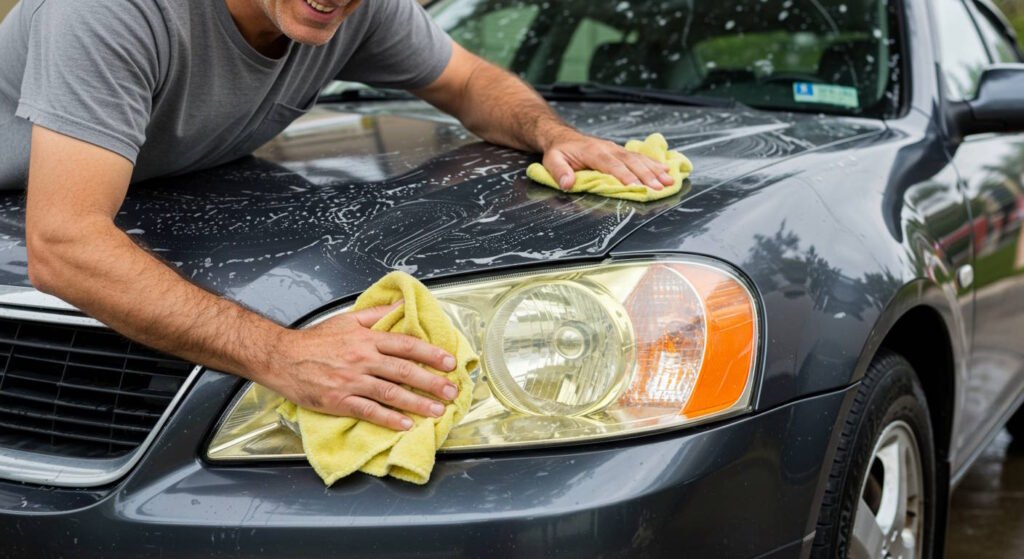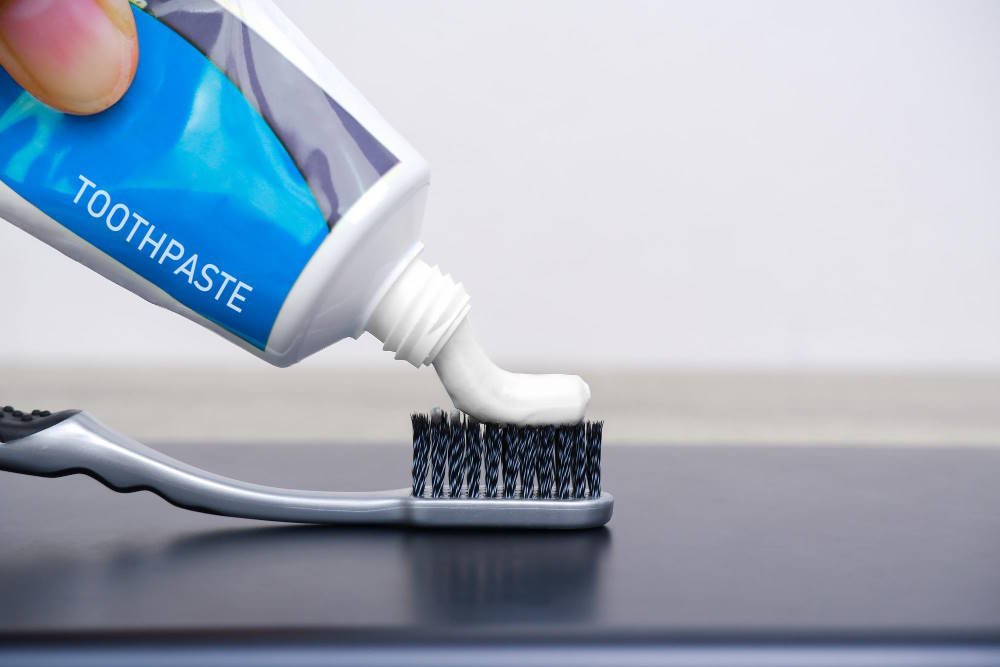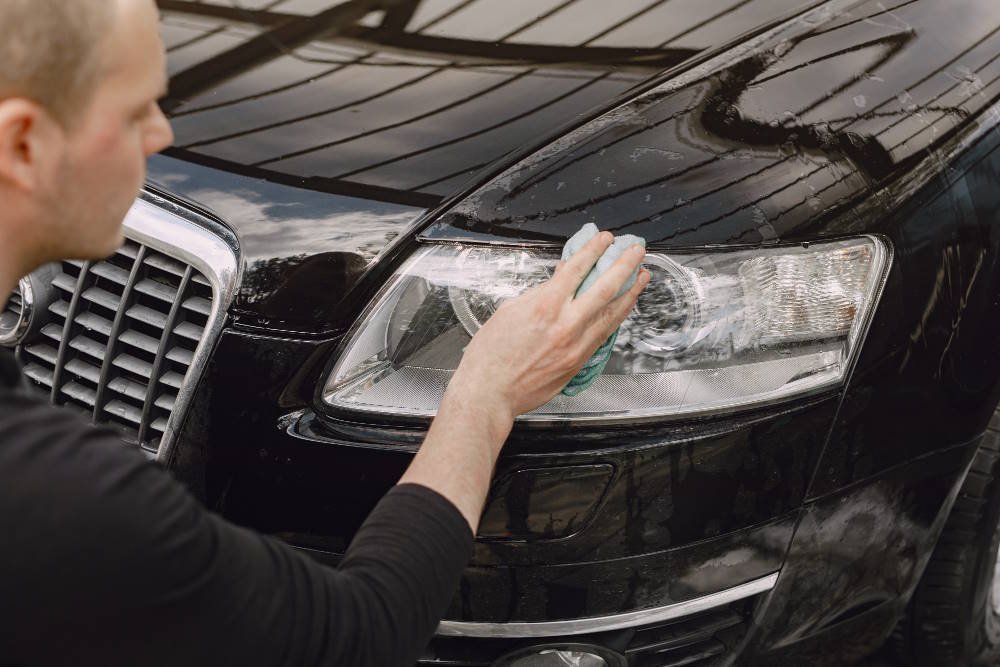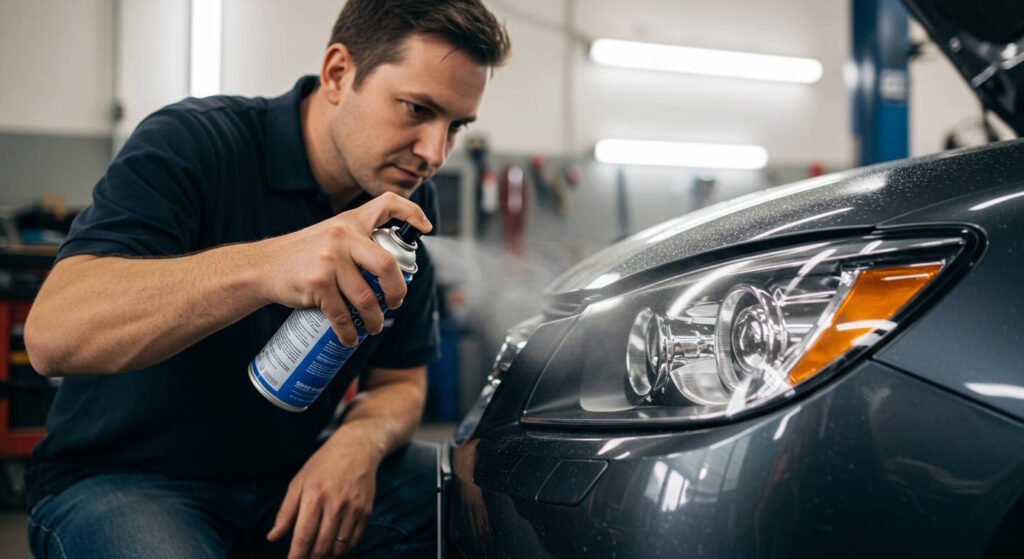If your headlights are only mildly oxidized, one surprising household item may help: toothpaste.
Step-by-Step: Using Toothpaste to Clean Headlights
1) Wash and Dry the Headlights

Begin by thoroughly cleaning your headlights with warm water and car-safe soap. This removes any dirt, dust, or grease that could interfere with polishing. Dry them completely with a clean microfiber cloth.
2) Choose the Right Toothpaste

Use a white, non-gel toothpaste that contains baking soda or similar mild abrasives. Toothpaste with baking soda tends to be most effective for this purpose. Avoid gel-based or colored toothpastes, which typically don’t have the scrubbing power needed for this job. Whitening formulas can work well, but only if they rely on physical abrasives rather than bleaching agents.
3) Apply the Toothpaste
Squeeze a small amount of toothpaste (about the size of a dime) onto a soft cloth, sponge, or applicator pad. You can always apply more if needed.

4) Polish with Circular Motions
Rub the toothpaste into the headlight lens using moderate pressure and small circular motions. Continue polishing for 3 to 5 minutes, focusing on any particularly foggy areas. You should start to notice the lens looking clearer as oxidation is removed. Be careful not to rub too vigorously or for too long, as excessive pressure could potentially damage the plastic surface.
5) Rinse and Dry

Rinse the headlight thoroughly with clean water to remove all toothpaste residue. Dry it again with a microfiber towel to assess the results.
6) Apply a UV Sealant

This step is critical and should not be skipped. Once the oxidation is gone, the lens becomes even more vulnerable to UV damage. Without proper sealing, the fogginess can return within days to weeks, especially in sunny climates. To prevent this, apply a UV-protective headlight sealant. These are available at most auto parts stores and are easy to apply with a cloth.
Over time, your car’s headlights can become dull, cloudy/foggy, or yellowed. This isn’t just a looks issue, but it can significantly affect how well you see at night and how well other drivers see you. According to research cited by the National Highway Traffic Safety Administration (NHTSA), headlight output can drop by more than 20 percent due to lens deterioration, and in more severe cases, it can fall by as much as 80 percent. That’s a serious safety concern.
Thankfully, you don’t always need to spend a lot of money to improve headlight clarity.
Why Toothpaste Works on Foggy Headlights
Headlight fogging happens mostly because of oxidation. The clear plastic lens covering each headlight is made of polycarbonate, which is strong but prone to UV damage over time. Exposure to sunlight, road salt, grime, and environmental pollutants causes the plastic to degrade, leading to a hazy or yellowed appearance.
Toothpaste contains mild abrasives such as hydrated silica or baking soda that help scrub away the top layer of oxidation on plastic surfaces. Just as toothpaste polishes your teeth, it can lightly polish the plastic lens and remove surface oxidation. While this method won’t repair deep scratches or heavy damage, it can significantly improve clarity in a pinch.
What to Expect
This toothpaste method is best suited for headlights with light to moderate cloudiness. It will not restore severely yellowed or deeply scratched lenses. When followed by proper sealing, the results may last one to three months, depending on climate and sun exposure. Without sealing, however, oxidation can return within days, especially in sunny or coastal areas.
Repeated polishing, especially with abrasive products, can gradually wear away the factory-applied UV coating on your headlights. This means you should treat this method as a temporary fix rather than a long-term solution. Think of it like shining your shoes before a big event; it makes a noticeable difference, but it doesn’t replace deep cleaning or repair.
Other Solutions for Long-Term Results
If your headlights are severely degraded or if you’re looking for a more durable fix, consider one of these options:
Headlight restoration kits ($15-$30): These include sanding discs, polishing compounds, and UV sealant for more lasting results.
Professional headlight restoration ($50-$100): Auto detailers or body shops use specialized tools and sealants to fully restore headlights.
Headlight replacement: In cases of extreme damage, replacing the entire assembly may be the only way to restore full function and appearance.
Final Thoughts
Toothpaste offers a cheap, quick, and surprisingly effective solution for foggy headlights, especially when you’re short on time or preparing for a vehicle inspection. While not a permanent fix, it’s a smart DIY trick for restoring clarity to lightly oxidized lenses. Just don’t skip the sealing step, and know when it’s time to upgrade to more robust solutions.
Clear headlights aren’t just about aesthetics; they’re a key part of safe nighttime driving. If toothpaste gives you better visibility today, it’s a step in the right direction.



